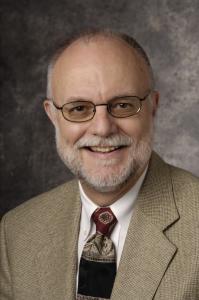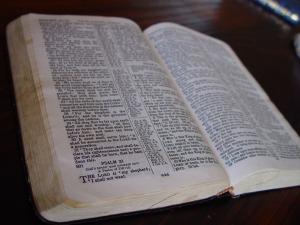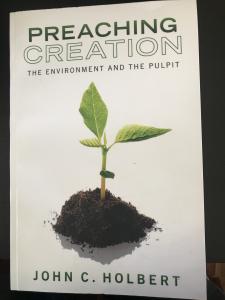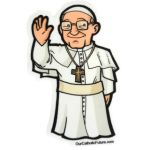 My denomination, United Methodism, has had more than its share of controversies over the 50 years of my ordination as a UM clergyperson. I began my seminary training in Dallas in 1968, the year that the Evangelical United Brethren church and the Methodist Church merged to become the United Methodist Church at a Dallas Uniting Conference. At the same time at that conference, the old “Central Jurisdiction,” a group of African-American churches, joined as well into the new UMC. For various ethnic and linguistic reasons, the Rio Grande Conference was also formed to offer special ministries for Latino/a United Methodists. Just in the past few years that conference has merged with the older Southwest Texas Conference to form the Rio Texas Conference. As any of you non-United Methodists can surmise, we UM’s are forever in the business of trying to respond to the cultures we attempt to do ministry with, merging and joining to try to better serve the world with our understanding of the gospel.
My denomination, United Methodism, has had more than its share of controversies over the 50 years of my ordination as a UM clergyperson. I began my seminary training in Dallas in 1968, the year that the Evangelical United Brethren church and the Methodist Church merged to become the United Methodist Church at a Dallas Uniting Conference. At the same time at that conference, the old “Central Jurisdiction,” a group of African-American churches, joined as well into the new UMC. For various ethnic and linguistic reasons, the Rio Grande Conference was also formed to offer special ministries for Latino/a United Methodists. Just in the past few years that conference has merged with the older Southwest Texas Conference to form the Rio Texas Conference. As any of you non-United Methodists can surmise, we UM’s are forever in the business of trying to respond to the cultures we attempt to do ministry with, merging and joining to try to better serve the world with our understanding of the gospel.
Of course, the most public controversy we UM’s have faced are issues around human sexuality. Since 1972, that thorny clause in our Book of Discipline, the constitution of our church, “homosexuality is incompatible with Christian teaching,” has caused us no end of debate, usually rancorous and too often “unchristian.” To this day, late in 2020, that phrase remains in the Discipline, much to the horror and sorrow of many of us who have spent vast amounts of energy and time trying to send that phrase into the outer darkness where it surely belongs. Our upcoming 2021 General Conference (delayed a year by the pandemic) promises to address once again the question of the full inclusion of LGBTQ persons, both as laypersons and clergy in the UMC. Various proposals will also be made to divide the denomination over this issue into several separate groups. How that will occur is anyone’s guess, but if division does occur, the UMC will once again look quite different. Meanwhile, many groups within the UMC have already moved to form new communities or to divide from the old UMC, feeling they can no longer find a home there. There is rarely a dull moment in the UMC!
A less discussed controversy, but one that has a deep resonance now after a summer of rich and long-delayed discussions of institutional racism across the nation, is the logo that was chosen at that Uniting Conference in 1968. The Cross and Flame of the UMC was patented in 1971 as the official logo of the denomination and has become ubiquitous for nearly 50 years on official documents of the church along with gracing vast numbers of church buildings, both inside and out. Since both my wife and I are UM clergy, we look out for the UM churches wherever we travel (when we could travel, of course!), and can easily spot them by the presence of that familiar cross and flame. You may see the logo at the beginning of this article. It was chosen for several important theological reasons. The two flames that merge into one in the logo represent the two previous denominations, Methodist and EUB, that now form the one flame of the UMC. In addition, the cross to the right of the flame, is the central symbol of all Christian denominations. And, of course, the flame is indicative of the power of the Holy Spirit, made especially manifest at Pentecost, as the “tongues of fire” descended on the assembled apostles in Acts 2. It is a rich symbol, and has served our church well over this past half century as a representation of what we hope to be doing in the world: sharing the cross of Christ, and offering the gift of the Holy Spirit in our ministries.

But there is a problem, one few white people identified; I know that I never thought about the potential problem for one second. Remember that I said that the old African-American Central Conference merged into the UMC along with the EUB in 1968. There was much celebration when that happened, ushering in, we all hoped, a new day of racial reconciliation and harmony in the new UMC. However, as the years passed, and as African-Americans gained a more prominent voice in the UMC (or better said, as we white people learned slowly how better to listen to our African-American brothers and sisters) the logo of Cross and Flame began to embody a special and long-held pain for our Black friends. What many black UM’s saw in that logo was a disquieting and monstrous memory of burning crosses, chilling reminders of racial bigotry and violence well within the lifetimes of many Black UM persons. What we white folk saw as a theological unifier of Christ and Spirit, too many African-Americans saw as a terrifying sign of racial disunity and murder. While I saw Christ, they saw the KKK, burning crosses on lawns in front of buildings across the land. No better example of needing to hear the views of those who share a different experience of symbols can be found than this one surrounding the logo of Cross and Flame. The UMC once again needs to act in the face of this serious problem with its central symbol.
I am very happy to say that the North Texas Conference of the UMC, a conference in which I worked for over 30 years, has just this September, 2020, passed a resolution by a 558-176 vote to send legislation to the 2021 General Conference to change our logo due to its clear association for some of our members with the racist imagery of a burning cross. I have not yet seen whether any alternative logos have been suggested—I imagine various graphic artists are at work—but I know that a more inclusive logo can and will be devised. I do not know the reasons why 176 members of the North Texas Conference voted against this proposal, but I am very glad that 558 voted in favor, renewing my belief that the UMC can still speak to the issues of the day and that I can still find a place for my beliefs and practices among its churches. I am deeply grateful to the NT Conference for its action and especially grateful for those who made the issue a lively and crucial one for the church. Change is never easy, but at times it is certainly necessary; this is clearly one of those times. However the UMC is to be reconfigured after the 2021 General Conference, if it is to be reconfigured, whatever new UMC is given birth, it will have a new logo, one that I hope represents the full scope of its membership and its mission in the world. I am anxious to see what appears. Given the continuous struggle of the UMC to catch up with the world it hopes to serve, I expect that new logo to be one that will serve us for another 50 years, or at least until some among us see again its inadequacies and we return to the drawing board, seeking a new expression of our UM lives in a world that I think still has need of what we have to say and do.















